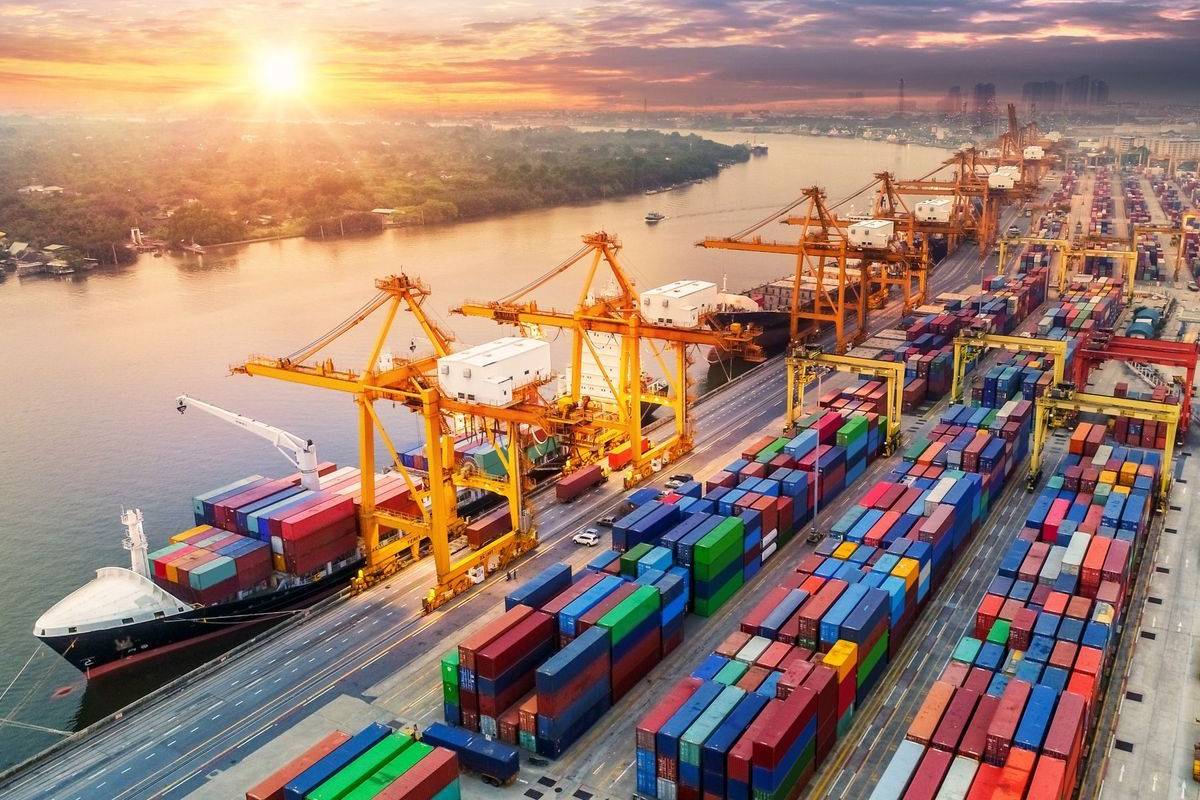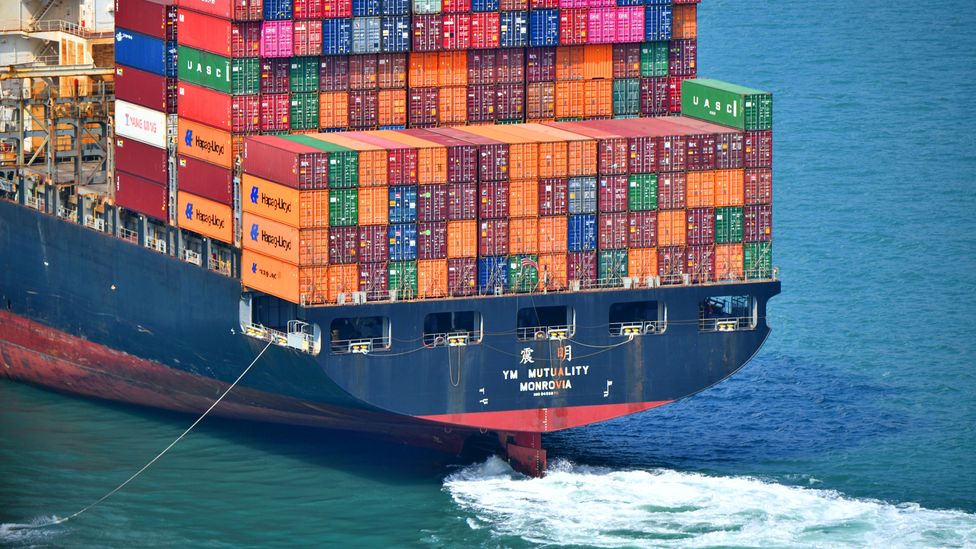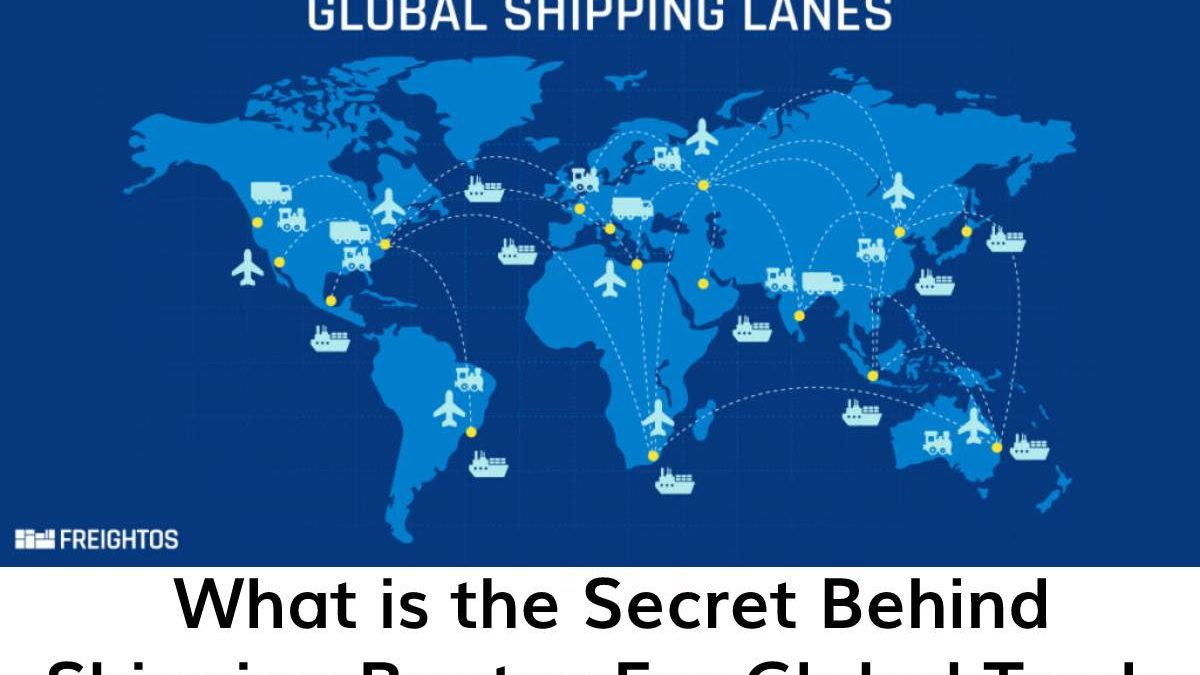Secret Behind Shipping Routes For Global Trade-Over 90% of the world’s trade is transported by sea, either in containers, dry bulk, or broken bulk. Therefore, ocean shipping channels are essential to the maritime freight sector and the global economy. However, there are significant differences in traffic density despite many marine routes. While some are actual “maritime highways,” others see less trade. Check out the busiest maritime routes.
Table of Contents
Which global trade routes are the most significant?
Thousands of ships of various sizes travel commercially on the ocean and lake routes daily.
What do ocean shipping routes entail?
There are natural and artificial shipping routes in vast waterways (oceans, lakes, etc.), such as those used by large ships to connect important ports and transport cargo. These routes provide the quickest sailing times while enabling efficient, safe, and economical cargo transportation.
Which shipping lanes are the world’s most important?
Some of these maritime routes see greater use than others, depending on the needs of the trade. According to volume, these are some of the leading ocean commerce routes:

The English Channel or the Dover Strait
It is used for 25% of trade between European nations and the United Kingdom, making it a crucial link connecting the North Sea and the Atlantic Ocean. Every day, an estimated 500 ships travel across a canal, bringing 30% opposite direction and 22% to British imports from the EU.
The Malacca Strait
It is the main shipping route into and out of Asia as well as intra-Asia, connecting the region’s three largest economies—India, China, and Japan—as well as other nations like Thailand, Indonesia, Malaysia, the Philippines, Singapore, Vietnam, Taiwan, and South Korea. It is close to Indonesia, Malaysia, and Singapore and connects the Pacific and the Indian Oceans. Every year, more than 83,000 ships pass through it, accounting for 40% of all maritime traffic worldwide.
The Strait of Malacca, the shortest route between the Persian Gulf and Asia, is a crucial route for the transit of petroleum products, particularly for China. The second-largest oil trade checkpoint is where around 61% of the world’s petroleum production (or one-third) transports by water.
Canal de Panama
The primary marine trade route connecting Asia and the US East Coast of the artificial seaway. Nearly 14,000 vessels use this direct passage annually, connecting the Atlantic and Pacific Oceans.
a Suez Canal
The Suez Canal, located in Egypt’s northeast, is the Red Sea’s shortest maritime link between Asia and Europe. About 19,000 ships travel daily, making it one of the busiest and most actively used commercial routes. These account for 12% of world trade and 30% of container traffic. Additionally, it serves as the primary regional hub for shipping oil (7-8%), hydrocarbons, and liquefied natural gas (8%), which transports from Asia and the Middle East to Europe.
Copenhagen Straits
The Great Belt, and the Little Belt, which connects the North and Baltic Seas, are important trade routes between Russia and Europe.
The Saint-Lawrence Seaway
Each year, the USA and Upper Canada, including smaller ports, handle 40 to 50 million tonnes of goods.
- In the Strait of Hormuz
- Gibraltar’s Strait
- In the Bosphorus Strait
What is the volume of goods and cargo transported on the major shipping routes?
Each year, more than 50,000 ships transport millions of containers around the globe. On Trans-Pacific routes, moved 25 million TEUs of cargo in 2020. With 23 million TEU accounted for, the Europe-Asia-Europe route comes in second. The shipping sector handles over 11 billion tonnes of freight annually. This volume corresponds to an average of 1.5 tonnes per person in the current world population.

The cargo ships transport a wide range of products, including petroleum and oil products, mineral ores, raw materials, machinery, vehicles, equipment, chemicals, grains, packaged or frozen food, spices, factory parts, and other finished goods.
The reason why some shipping routes are busier than others is unclear.
Some shipping routes are utilized more frequently than others globally due to many factors that affect traffic flow, including:
One-way or two-way traffic; natural limitations like winds, ocean currents, and weather; the volume of products transported from one location to another
physical restrictions like coastlines and reefs
danger of piracy
However, shipping firms select the safest and most economical route for their ships to go on so that the cargo and crew reach their destination on schedule and in the best possible shape. Therefore, the traffic imbalance on particular routes is understandable when all the factors above consider.
Some sea routes have more frequent traffic. The most popular Secret Behind Shipping Routes For Global Trade, sea route worldwide is between China and the United States because of the enormous import or export demands. The Suez Canal, Dover, and the Strait of Malacca are key commercial shipping hubs, whereas smaller markets, China and the United Arab Emirates, or countries inside Europe, are not. Also, major commercial shipping hubs, whereas smaller markets, of course, have lower traffic flow. Other places are points of passage for hundreds of ships every year, which creates high traffic surges. For example, cargo surplus expects in the Europe-Asia and transpacific routes.
In what ways may digital technologies aid in better freight management?
The trade imbalance, including port and marine lane congestion, an excess of empty containers in some places, and a lack in others, bring up multiple concerns. As a result, companies and freight forwarders must enhance their procedures and equipment to manage shipping via challenging ocean routes more effectively. They can rely on technology solutions provided by logistics tech specialists to complete various crucial tasks, such as determining the best ways, calculating shipping times and obtaining precise. ETAs, getting competitive freight rates, making reservations, tracking their cargo, and streamlining port operations.
Sinay, a renowned supplier of logistic modules, uses cutting-edge technologies like artificial intelligence, big data, the internet of things, and blockchain to predict. ETA, reduce vessel fuel consumption, lessen the industry’s carbon footprint, select the best route, and obtain pertinent and real-time statistics that enable quick and effective decision-making.
Conclusion
Sea shipping will continue to rise Secret Behind Shipping Routes For Global Trade quickly as global trade increases. It implies that the actual main shipping routes will become busier in the coming years and may experience an unprecedented increase in traffic. To manage ships, shipping trade routes, transit time, cargo ports, and containers more effectively, all maritime industry participants (businesses, freight forwarders, port authorities, etc.) must develop more effective management techniques. Furthermore, to successfully tackle the problem of streamlining shipping networks, digitalization is essential.
Also read: World Trade Distribution – Major Services Provided And More

